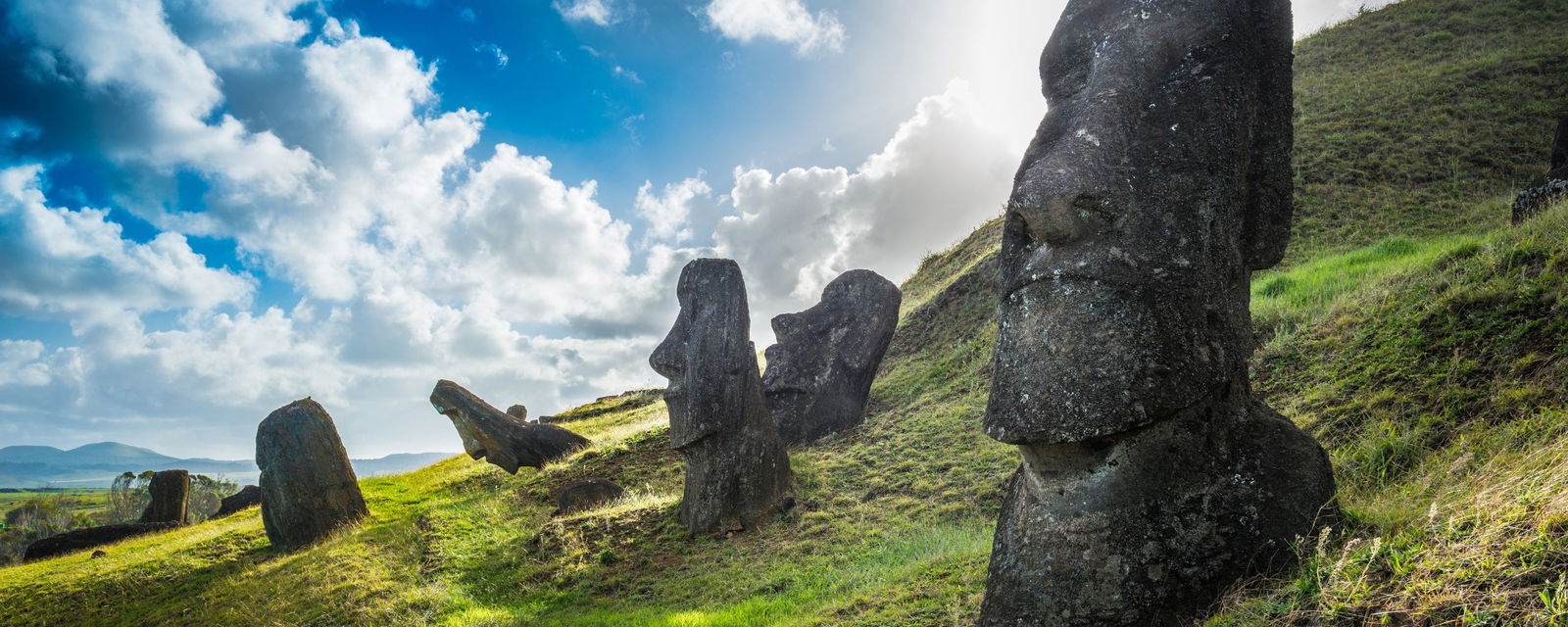


Also known as Rapa Nui, this remote destination is as mysterious as it is historic. The beaches are windswept and exotic, the eco travel vibe here is prominent, and the aura of ancient mysticism is almost palpable. What is Easter Island most famous for…Of course, it would be the moai: Polynesian statues made from compressed volcanic ash or tuff between 1200 and 1700 AD by the Polynesian inhabitants. The island itself is considered one of the world’s most isolated places on the planet.
To date, there have been almost 900 of the amazing statues identified. It is believed that they were carved exclusively out of stone chisels. They range in size, with the largest recorded at about 32 ft long. Researchers are still not certain why so few were actually installed with the rest apparently in varying stages of transport. They consist primarily of large heads on torsos though there are some in a kneeling position.
Believed to have been the main site from which the tuff for the moai was quarried, this volcanic crater also contains a crater lake. Still standing within this crater are a number of moai in different stages of completion.
A ceremonial village, Orongo is located at the southern tip of Easter Island. It is situated on the edge of a crater wall and thus the views from the entire village are astounding. There are several stone and mud houses built into the slope. At one time, Orongo was known for its birdman cult: marked by an annual race for a special egg during which those competing often fell to their deaths.

Winter on Easter Island falls between June and August. The island's temperatures during this season are relatively mild, with daytime highs in the 60s to low 70s Fahrenheit. It's a great time to explore the island's iconic moai statues and archaeological sites without the large crowds of the peak tourist season. Visitors can also witness the traditional Tapati Rapa Nui festival, celebrating the island's Polynesian culture through music, dance, and sports.

Spring in Easter Island, from September to November, brings pleasant temperatures and blooming landscapes. The island becomes adorned with colorful flowers, adding to its natural beauty. Spring is an ideal time for outdoor activities such as hiking and exploring the island's volcanic craters and coastal cliffs.

The summer season in Easter Island, from December to February, is the peak tourist time. The island experiences warm and humid weather, with daytime temperatures ranging from the 70s to 80s Fahrenheit. It's a bustling time with many travelers visiting to witness the magnificent Ahu Tongariki, the largest ahu (platform) with 15 standing moai statues. Summer is perfect for snorkeling and swimming in the island's crystal-clear waters.

Fall in Easter Island, from March to May, brings milder temperatures and occasional rainfall. It's a quieter time on the island, making it ideal for those seeking a more tranquil experience. Fall is a great time for cultural explorations, as visitors can engage with the local Rapa Nui people and learn about their traditions and way of life.